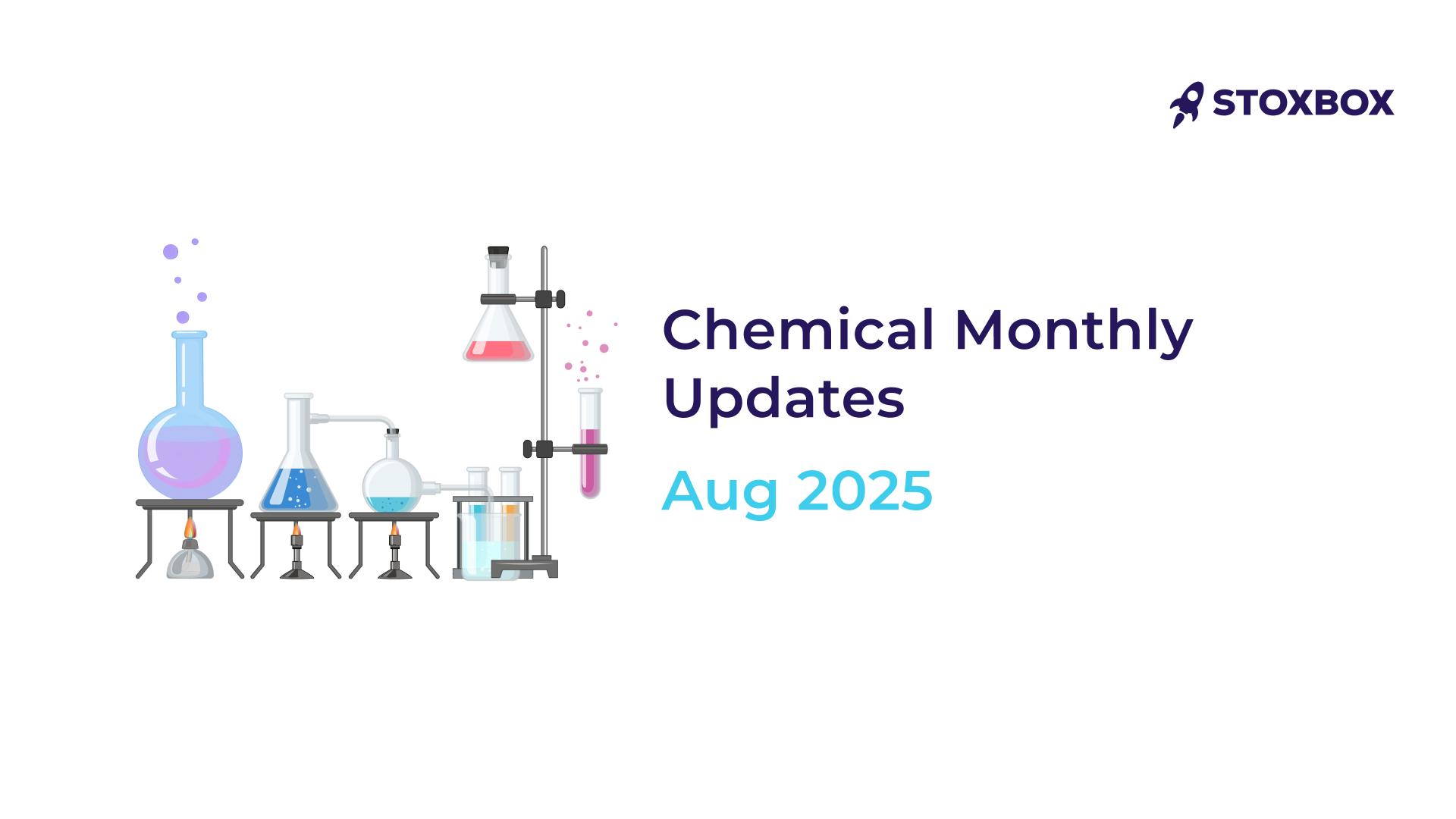Subdued pricing and inventory concerns weigh sentiments
The chemical sector experienced significant headwinds in August 2025, as global economic uncertainty, supply dynamics, and energy price fluctuations collectively impacted product pricing and demand sentiment. Crude oil prices, a key driver of chemical feedstock costs, declined 4-5% MoM. This softness translated into lower raw material costs, yet failed to alleviate pressure on the overall sector due to weak demand and excess inventory. On the global front, US chemical production declined on a monthly basis in August 2025; however, it remained higher compared to the previous year, as momentum softened with broad-based weakness across inorganics, synthetics, coatings and agricultural chemicals, partly offset by a modest uptick in organics chemicals. The European chemical sector continues to face structural pressures driven by weak demand and uncompetitive energy prices. This is particularly an issue for commodity products and petrochemicals, where China holds a competitive edge due to large-scale production and low production costs. Recovery prospects remain uncertain. Demand increase is expected to be limited due to the global weak economic conditions. The business trade environment in which European chemical companies are operating is exposed to high risks from global trade disruptions, including US tariffs. As a result, EU27 chemicals output is projected to decline in 2025, reversing the 2.4% growth seen in 2024. On the earnings front, Indian chemical companies reported a mixed performance in Q1FY26. While some posted healthy top-line and bottom-line growth, others struggled with declining metrics and missed estimates due to cyclical headwinds and operational challenges. Pricing and margins were key differentiators, as certain companies achieved strong margin expansion from lower raw material costs, whereas others faced significant margin contraction driven by Chinese overcapacity, inventory losses, and continued pricing pressure. Overall, the sector continues to navigate global uncertainties and pricing pressures, but improving demand visibility, cost discipline, and a gradual revival in exports signal a potential turnaround, particularly for value-added and specialty-focused players in the coming quarters.
Pricing trends remain subdued across most chemicals, although a modest recovery is visible from lower levels. Refrigerant pricing remains steady, despite domestic softness, which has been partly offset by exports, benefiting companies such as SRF and NFIL. On the other hand, Methanol prices spiked substantially, while Ethanol and Ethyl Acetate prices saw a steep decline. Soda ash saw prices remain down from the current level. Chinese prices remain largely disconnected from Indian prices due to local demand and supply dynamics. Ethyl Acetate and Phenol witnessed price corrections of 1% MoM each, while Aniline and Acetic acid registered a decline of 2% MoM and 1% MoM, respectively. Isobutanol prices remain flat during the month.
The chemicals sector is expected to witness optimism driven by capex incurred and potentially better pricing in H2FY26. Indian companies have announced plans to create a battery manufacturing capacity, reinforcing the country’s push towards self-reliance in battery and new-age chemical production. Indian chemical companies’ long-term growth prospects in the speciality chemicals sector are expected to be driven by revenue opportunities from the perspective of import substitution and a potential rise in exports to global customers. Companies such as Aarti Industries, Acutaas Chemicals, GHCL, Laxmi Organics, Navin Fluorine, Neogen Chemicals, SRF, and Vinati Organics are likely to benefit from the demand for value-added chemical products.
You might also Like.
Union Budget 2025-26 Impact on Sectors
Edit Announcement Impact Companies Enhancing the credit guarantee cover for...


